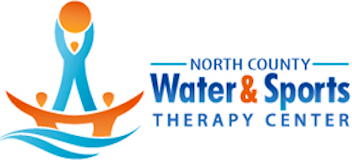Foam Rolling… Does it work? By: Jordan Levine, PT, DPT
Foam rolling and other Self-Myofascial release tools (hand held rollers) have gained popularity in the fitness and wellness world for decreasing pain, improving range of motion, decreasing muscle soreness and enhancing recovery. The physiological effects of these tools are mostly theoretical and are still being researched. There has been a variety of claims of these tool benefits but there is no consensus on optimal application for best results.
WHAT IT DOES
- Foam rolling improves ROM – when performed for as little as 30sec and for up to 5 mins it has shown to have short term benefits (less than 10 mins) for increasing joint ROM in hip, knee and ankle joints.
- Stretch after Foam rolling – ROM improvement from foam rolling has better effects when static or dynamic stretching is performed immediately following the foam rolling.
- Decreased effects of post exercises muscle soreness – Foam rolling after high intensity exercise helps to decrease delayed onset muscle soreness (DOMS).
WHAT IT DOES NOT
- No effect on performance – Foam rolling does not negatively or positively affect performance when performed prior to activity.
- More is not better to improve ROM – Performing for longer than 5 mins on one area has not shown to have more benefit than shorter duration.
- Breaks up scar tissue or breaks up myofascial adhesions. There is no current research that supports these claims.
WHAT IS THE POSSIBLE CAUSE OF THESE BENEFITS
- Altered Viscoelastic and thixotropic properties of fascia. Foam rolling helps fascia to return to more a gel like state causing the increased ROM of joints.
- Increased Blood flow to tissues – Foam rolling brings increases intramuscular temperature and blood flow causing the increased ROM of joints and decreased DOMS. Decreased DOMS likely due to the effect of blood lactate removal, edema reduction and oxygen delivery to muscle.
- Stimulation to joint muscle receptors – alters muscle spine length and/or stretch perceptions to allow increased ROM of joints.
TIPS 1. Foam Roll targeted area for 30sec – 2mins prior to exercises. 2. Start at one end of the muscle and slowly move to the other end by visualizing rolling down 2 inches and back up 1 inch for the entirety of the muscle. 3. Stretch immediately after foam rolling. Performing either static stretching of targets muscle for 20-45 sec holds, or performing dynamic stretching / Active ROM of joint for 10-15 reps to maximize effectiveness of foam rolling. 4. Do not exceed 20-30 mins of rolling total when rolling entire leg and hip muscles when performing to avoid post exercise soreness.

Foam rolling Calf / Calves. Start out with foam roller placed at the calf region close to the back of your knee supporting yourself with arms allowing pressure to be applied to calf muscles. Begin rolling slowly moving roller down two inches then back up one inch until you have made your way to Achilles or just before reaching ankle. This whole process should only take from 30 seconds to 1.5 minutes. Rest your buttocks on ground intermittently as needed if arms begin to get tired. To make this more aggressive try crossing one ankle over the other with targeted calf against foam roller and perform same method of rolling down two inches, up one inch. As with all foam rolling it is important to stretch muscle that was rolled and use new range of motion immediately to help maintain new range of motion. In this case stretch the calf muscle following foam rolling the calf.

Stretching Calf muscles – start in staggered stance with back leg straight and front knee bent with arms supported on wall. Make sure to keep big toe in a straight line with heel of the same foot. Keep your trunk in an upright position with pelvic bone tucked under (posteriorly tilted) and bend front knee bringing belly button closer towards the wall until a stretch is felt in the back of the leg. Hold moderate stretch sensation for 30-60 seconds, repeat for 2 sets on targeted leg.
Examples of using your new range of motion – seated toe taps, walking on heels, full squats, calf raises with heels off step allowing heels lower down past toes etc.
References Cheatum SW, et al. The Effects of Self-Myofascial Release Using A Foam Roll Or Roller Massager On Joint Range Of Motion, Muscle Recovery And Performance” A Systematic Review. IJSPT. 2015; 10(6):827-838.
alf raises with heels off step allowing heels lower down past toes etc.[/caption]References Cheatum SW, et al. The Effects of Self-Myofascial Release Using A Foam Roll Or Roller Massager On Joint Range Of Motion, Muscle Recovery And Performance” A Systematic Review. IJSPT. 2015; 10(6):827-838.
